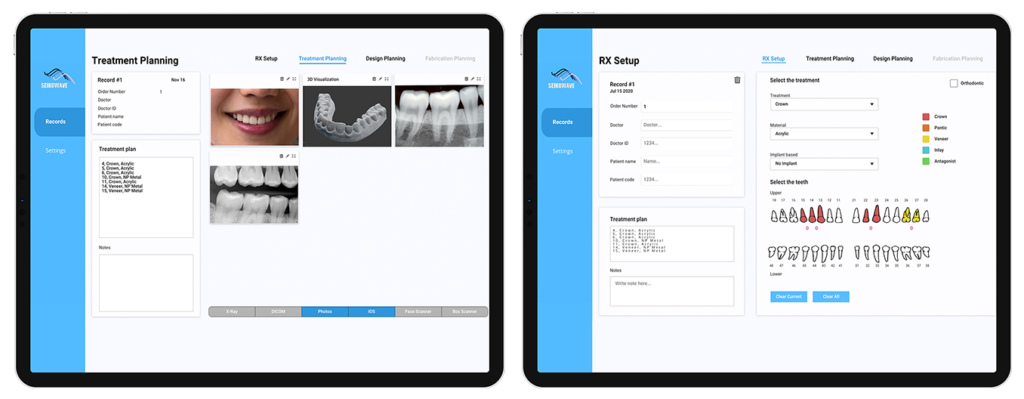Umajin Solution Examples
Seikowave
The Challenge
Dentistry and in particularly advanced dental procedures is a growing market. The growth rate is much higher in regions of the world that haven’t had a focus on oral health, but have a growing middle class.
There are many standalone procedure workflow packages used in a dental practice, particularly specialist practices like orthodontics, cosmetic veneers and crown design. This means a lot of time is spent re-entering patient data and wrangling 3D formats.
Seikowave provided a low cost 3D oral scanner, but a customer required a complete integrated workflow solution to take the product to market. They had a very tight, four-week timeframe to create a working solution for this customer to evaluate.
The Solution
Seikowave have created a desktop software planning tool that that allows dentists to create a multi treatment strategy. The existing Oral Scanner device attaches to the software via a native plugin.
The application integrates with multiple dental expert software systems, such as patient management, 3D stitching, crown design and plastic aligners, creating a consolidated procedure workflow. This includes converting and transferring data such as 3D teeth scans and patient records.

The planning view requires rich multimedia capability, including the ability to display X-rays, photographs and color 3D oral scans. This view makes it easy for a dentist to see all of the relevant information, take additional photos, makes notes and create a plan for current and future procedures.

The Benefits of Umajin
Umajin enabled Seikowave to deliver on this very tight 4-week timeframe. This would not have been possible with any other approach. The full time team was only 3 members; a product owner, designer and developer along with some native plugin and QA support.
Umajin’s multi-experience application development platform enabled the design and development teams, based in different locations, to build and test the solution with the scanner hardware and application integrations in real time.
Umajin has a library of pre-built components that allow designers to create the front end layout and actions. This allows faster development cycles as the designer has full control.
The power of Umajin’s hybrid approach is that it still allows for custom code when needed. Umajin provides two levels of plugin, Javascript and native. Javascript is the quickest and was used for the data exchange with the dental applications. The native plugin is more complex, but allows the software direct access to the operating system. In this case the plugin communicates with the 3D scanner & stitching software.
The media formats built into Umajin for images and 3D models make it quick to incorporate different content. Custom 3D shaders allowed unique rendering to be created to help visually define the appearance changes between teeth/gums and internal/external regions.
As the product owner I was barely able to keep up with my specification requirements in the time the team was creating the solution. Eli – Product Owner
Value of the Solution
Achieving the tight deadline was critical for Seikowave to ensure they could meet the customer opportunity. The solution provides very high level of functionality at a much lower cost than existing solutions. This is a key criteria for the price sensitive market, targeting many recent dental school graduates who are setting up new practices. It provided a great proof of the Umajin approach.
The better workflow and unified planning for dentists improves efficiency and outcomes for patients. By providing a central repository for patient data it is possible to swap out the specialist dental software modules for specific regional markets increasing the go-to market partners and channels. Data entry errors are removed as data from the patient records doesn’t need to be re-entered.
Other Key Benefits of the Solution
Umajin enables Seikowave to build proprietary components within Umajin for several modules that are currently dependent on licensed technology, such as image stitching. This will enable improved performance, control over additional features, as well as reduced licensing cost.
